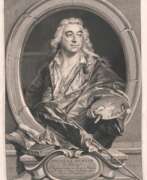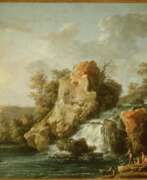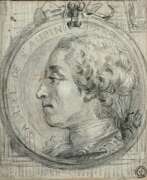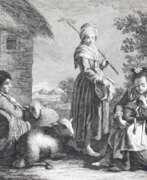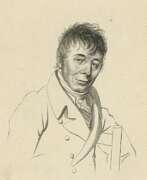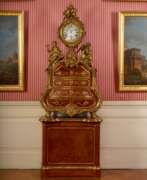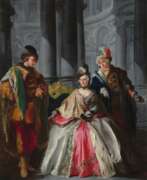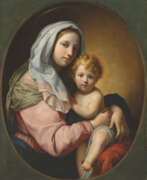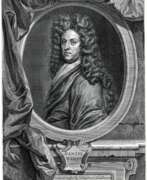Draftsmen 18th century
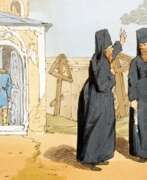

John Augustus Atkinson was a British watercolorist, illustrator and engraver.
In 1784, the young Atkinson traveled to St. Petersburg, Russia, to stay with his uncle James Walker, who worked as an engraver at the court of Empress Catherine the Great. The aspiring artist learned from the work of the great Russian painters whose paintings he saw in the art galleries of St. Petersburg. Catherine and her son Paul I, noticing his talent, commissioned Atkinson to paint pictures on historical subjects.
In 1801 Atkinson returned to England and a year later published an album entitled "Pictorial representation of Russian manners, customs and amusements" on 100 plates drawn and engraved by himself. This work was a great success in Europe. Later, during the Napoleonic Wars, Atkinson created many battle scenes, including the Battle of Waterloo and naval battles. In 1808 he was elected to the Society of Watercolor Painters.


Pompeo Girolamo Battoni was an Italian painter who displayed a solid technical knowledge in his portrait work and in his numerous allegorical and mythological pictures. The high number of foreign visitors travelling throughout Italy and reaching Rome during their "Grand Tour" led the artist to specialize in portraits.
Batoni won international fame largely thanks to his customers, mostly British of noble origin, whom he portrayed, often with famous Italian landscapes in the background. Such Grand Tour portraits by Batoni were in British private collections, thus ensuring the genre's popularity in Great Britain. One generation later, Sir Joshua Reynolds would take up this tradition and become the leading English portrait painter. Although Batoni was considered the best Italian painter of his time, contemporary chronicles mention his rivalry with Anton Raphael Mengs.




Antonio Bicci was an Italian painter working in Florence in the late 18th century.
Bicci is known for a series of costume drawings published in 1796 ("Contadini della Toscana") depicting life in Tuscany. The beautiful color prints depict workers in town and country, couples in love, family groups, and men and women at work and leisure in various Tuscan towns and regions, often with cityscapes in the background.


Louis-Marin Bonnet (French: Louis-Marin Bonnet) is a French draftsman and engraver, an outstanding master of metal engraving using the “pencil style” technique. Since 1757, Louis-Marais Bonnet was a student of Jean-Charles Francois, then of Gilles Demarteau. He became famous for his color engravings reproducing drawings by A. Watteau, F. Boucher, Sh.-A. Van Loo, J.-B. Yue. Bonnet reproduced mainly complex pastel drawings, using up to eighty boards per engraving. He used opaque paints that gave a matte tone and tinted paper. He reproduced the spaces by printing with white from a separate board. Bonnet even imitated the golden frames bordering the original drawings. This technique is called “pastel style”. In 1769, Bonnet described his technique in detail in the book Pastel in Engraving, Invented and Executed by Louis Bonnet. In 1765-1767, the French master worked in St. Petersburg, where he completed several engraving portraits in the “pencil style” of Catherine II and the heir Pavel Petrovich based on drawings by Jean-Louis de Velli, then returned to Paris and opened his own workshop.




Carl Buddeus, full name Carl Friedrich Christian Buddeus, was a German painter, draftsman and engraver.
After studying at the Salzmann School in Schnepfenthal, Carl Buddeus went to Estonia. For several years he worked as a teacher on the island of Osel (now Saarema) and made sketches of local landscapes. Later Buddeus worked as a tutor and illustrator in Russia in St. Petersburg and Pskov. In 1820, two of his booklets with hand-colored lithographs depicting the life and peoples of Russia were published in Leipzig.


Philippe Caffiéri was a French sculptor. The son of Jacques Caffieri, he was received as a maître fondeur-ciseleur, joined his father's workshop and sometimes signed his independent works, especially after the death of his father in 1755, P.CAFFIERI.


Canaletto, born Giovanni Antonio Canal, was an illustrious Italian painter celebrated for his masterful cityscapes, particularly of Venice and London. Emerging as a topographical painter after 1719, Canaletto became renowned for his detailed and atmospheric views, known as vedute, which captured the essence of Venice and London with a unique blend of accuracy and artistic embellishment. Despite using a camera obscura to achieve precision in his architectural details, Canaletto often infused his paintings with creative adjustments to enhance their appeal.
His early works, such as "The Stonemason's Yard," are particularly prized for their vivid portrayal of Venice's daily life and architectural beauty. Canaletto's paintings were highly sought after by English aristocrats during their Grand Tours, leading him to spend a significant period in England, where he continued to produce esteemed works capturing the English landscape and urban scenes.
Despite his international success, Canaletto's work was less appreciated in his native Venice during his lifetime, only gaining broader recognition and appreciation in later years. His legacy, however, has had a lasting impact on landscape painting, influencing future generations of artists.
If you're interested in staying updated on art exhibitions and auctions featuring Canaletto's work, consider signing up for newsletters from art galleries or auction houses that specialize in historical artworks. This way, you'll be informed about new sales and exhibition events related to Canaletto without any exaggerated language or promises.
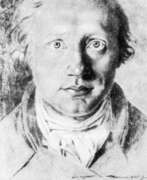

Asmus Jacob Carstens was a Danish-German painter of the late 18th century. He is known as a painter and draughtsman, a representative of classicism and romanticism.
Carstens produced famous narrative and historical paintings, including Plato's Symposium and The Battle of Rossbach, which brought him popularity. His famous huge painting The Fall of Angels, containing 200 figures, made him a professor at the Academy of Fine Arts in Berlin. Carstens preferred pencil, chalk and watercolor, and worked with fresco, rarely using oil. Most of his large-scale projects have been left unfinished or lost. Many of his surviving works exist as drawings.


Louis-François Cassas was a distinguished French landscape painter, sculptor, architect, archeologist and antiquary.
Besides his architectural and archaeological drawings and sketches, he drew numerous costumes studies, views and processions, as well as scenes from daily life, plants and animals of all sorts. He also exhibited views of his travels at the "Salons", which were periodic art exhibitions sponsored by the French Académie Royale, in 1804 and 1814, and published Picturesque views of the Principal Sites and Monuments of Greece, of Sicily, and of the Seven Hills of Rome, of which thirty parts had already been published by 1813.
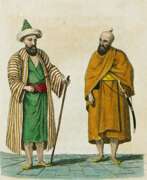

Antoine-Laurent Castellan was a French painter, engraver and architect.
Castellan traveled to Turkey, Greece, Italy and Switzerland. He was the official artist of the mission of Engineer Ferrego to the court of Sultan Selim III, spending several months in Constantinople in 1797. Castellan was a prolific draughtsman, making notes of everything he saw in Constantinople, and also engaged in portrait painting of socialites, which he captured in numerous works he published on his return to France. His best-known work is The Manners, Customs and Costumes of the Otomans and a Brief Account of their History, published in 1812.


George Chinnery was a British painter best known for his work in India and China.
George studied at the Royal Academy schools, painting portraits and sketches, but in 1802, shortly after his marriage, trying to straighten out his family's financial situation, he traveled to India. In Calcutta, Chinnery became the leading artist of the British community in India. And in 1825 he went to China and lived in Macau for the rest of his life.
Chinnery painted portraits of Chinese and Western merchants, visiting sea captains and their families. Chinnery also painted landscapes (both in oil and watercolor) and made many vivid drawings of Macau residents of the time engaged in their daily activities. Among the heroes of his portraits are the Scottish opium merchants who patronized him. In addition to their artistic value, Chinnery's paintings also have historical value, as he was the only Western artist living in South China during the early to mid-19th century.
There are still many architectural sites in Macau recognizable from his sketches that have changed little since then. Today, Chinnery's paintings are in public and private collections around the world. The Macau Museum and the Macau Art Museum have a good selection of his work.


Antoine Coypel was a French painter, known for his versatile and eclectic style, which blended the French classical tradition with influences from Pieter Paul Rubens and the Roman Baroque. His career flourished thanks to his role as a court painter and his positions within the French art world, including his tenure as a professor and director at the Académie Royale.
Antoine Coypel's artistry was evident in his ability to infuse classical subjects with a vibrant color palette and dynamic compositions, reflecting a transition in French painting towards a lighter 18th-century style. His notable works include "Democritus" at the Louvre and "Susan accused of adultery" at the Museo del Prado, demonstrating his range from philosophical figures to biblical narratives. Beyond painting, Coypel was also a master draughtsman, with many of his drawings preserved at the Louvre, showcasing his skill in figure studies and preparatory sketches.
Antoine Coypel's legacy extends through his family, with his son Charles-Antoine and half-brother Noël-Nicolas also being recognized painters. His works are held in esteemed collections globally, from the Louvre in Paris to the Metropolitan Museum of Art in New York, and continue to be celebrated for their artistic merit and historical significance.
For collectors and art experts, understanding Antoine Coypel's contributions provides valuable insights into the evolution of French art and the interplay between classical influences and personal creativity.
If you're interested in staying informed about upcoming sales and auction events related to Antoine Coypel's works, sign up for updates to ensure you don't miss out on these exclusive opportunities.


Giuseppe Maria Crespi, an Italian Baroque painter from Bologna, was known for his unique contributions to genre painting, capturing scenes of everyday life with a distinct realism and humanism. His work diverged from the formal academic tradition, providing a more direct and immediate approach to his subjects. Crespi's artistry is evident in his kitchen scenes and domestic subjects, where he depicted the grittier aspects of daily life, often with a touch of darkness or irony, as seen in his paintings like "The Flea" and "Searching for Fleas".
Giuseppe Maria Crespi's style evolved through his studies, first with Angelo Michele Toni and then with more prominent artists like Domenico Maria Canuti and Carlo Cignani. He was particularly influenced by the Venetian color and brushwork, integrating these into his own Bolognese tradition, which he further enriched during his travels across Italy.
His contributions extended beyond his own works; Giuseppe Maria Crespi influenced a new generation of artists, including notable Venetians like Giovanni Battista Piazzetta and Pietro Longhi, and his sons Antonio and Luigi Crespi followed in his artistic footsteps.
For art collectors and enthusiasts, Giuseppe Maria Crespi's works offer a unique glimpse into the Baroque era's daily life, marked by his distinctive style and profound humanism. If you're interested in exploring more about Crespi's art and staying updated on related sales and auction events, consider subscribing for updates, ensuring a connection to this remarkable artist's legacy.


Hendrik Frans de Cort was a Flemish landscape painter and draughtsman. In 1770 he became a master in the Antwerp Guild of Saint Luke. His early landscapes from the time before he moved to England were often made in collaboration with other Flemish artists. De Cort is known for his topographical views of English and Welsh landscapes. These were painted in an Italianate idiom indebted to the style of Gaspar Dughet. He often painted on specially prepared mahogany panels.
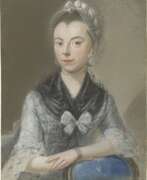



Alexander Ivanovich Dmitriev-Mamonov (Russian: Александр Иванович Дмитриев-Мамонов) was a Russian military commander and battle painter, known for his significant contributions both in the military and in the arts. Born on December 24, 1787, in Saint Petersburg, he was the son of Major-General Ivan Dmitriev-Mamonov. His early career saw him serving as an actuary at the Collegium of Foreign Affairs and later at the State Chancellery.
Dmitriev-Mamonov joined the People's Militia in 1812, rising to the rank of Lieutenant and participating in key battles such as Borodino and Krasnoi during the Napoleonic Wars. By 1823, he was promoted to Colonel and subsequently to Major-General in 1831, commanding various cavalry regiments. Apart from his military endeavors, Dmitriev-Mamonov was also an accomplished amateur artist. He co-founded the Imperial Society for the Encouragement of the Arts and established a drawing school in 1827. His battle sketches and watercolors are prominently displayed in Tsarskoye Selo.
In 1835, he transitioned to civil service, becoming a State Councillor at the Ministry of Internal Affairs. His notable awards include the Order of Saint Vladimir, Order of Saint Anna, and the Medal "For the Capture of Paris." Dmitriev-Mamonov's legacy is preserved through his artistic works and his contributions to Russian military history.
For more updates on auctions and sales related to Alexander Ivanovich Dmitriev-Mamonov's works, sign up for our newsletter to stay informed about new product sales and auction events.


Franz Ertinger (German: Franz Ertinger) was a French painter born in Germany but working in France and Flanders, a member of the Guild of St. Luke in Antwerp.
Ertinger is a versatile artist who has applied his talents in various fields of art. He is known as a painter, illustrator and printer of books, draughtsman, designer and writer, and worked as a royal engraver in Paris.


Pietro Fabris was a painter of Italian descent, active in England and Naples. Pietro is best known for work he completed for the dilettante geologist, the diplomat Sir William Hamilton, which included a number of engravings based on his paintings that depicted contemporary volcanic activity collected in two books, Observations on Mount Vesuvius, Mount Etna, &c. (London, 1774) and Campi Phlegraei: Observations on the Volcanoes of the Two Sicilies (Naples, 1776). He also painted some concert parties sponsored by Hamilton, including one that included a young Mozart at the harpsichord. In other works he produced for sale, he painted Bamboccianti scenes, genre paintings of local folk in native garb at work or play.


Franz Feyerabend was a Swiss painter and cartoonist.
Franz Feyerabend came from a family of artists - the landscape painters Augustin and Samuel Feyerabend were his brothers. He painted portraits and landscapes, as well as sketches and caricatures for print publications. Feyerabend's most valuable work is a set of 26 plates depicting Swiss military costumes.


John Flaxman was a British sculptor and draughtsman, and a leading figure in British and European Neoclassicism. Early in his career, he worked as a modeller for Josiah Wedgwood's pottery. He spent several years in Rome, where he produced his first book illustrations. He was a prolific maker of funerary monuments.
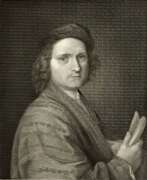

Marcantonio Franceschini was an Italian painter of the Baroque period, active mostly in his native Bologna. He was the father and teacher of Giacomo Franceschini.
His paintings have an academic and idealist strain, even for a member of the Bolognese School of Painting. The sparse figures are severely arranged and often porcelain in features. He worked with a younger colleague, Donato Creti. His style is often classified as Barochetto, a mixture of baroque and rococo; but it also could be said the neoclassical influence of French artists was beginning to overtake the baroque tradition. Wittkower describes him as the "Bolognese Maratta"


Caspar David Friedrich was a German painter of the late eighteenth and first half of the nineteenth centuries. He is known as a painter, draughtsman, watercolorist and is considered a key figure of early German Romanticism.
Caspar David Friedrich was the leader of the so-called Dresden Romantics, known for their emotionally intense landscapes. The artist himself viewed nature as a reflection of the soul and a symbol of religious experiences, creating works with deep symbolism. He actively used landscape to convey his emotions and used the technique of transporting the viewer into the virtual space of the painting. His works often depicted figures immersed in the contemplation of nature, facing infinity, which created a unique effect.


Christian Gottfried Heinrich Geißler was a German draughtsman, printmaker and illustrator.
After studying at the Leipzig Art Academy, Geißler went to St. Petersburg in 1790 and worked there as an art teacher. In 1793-1794 Geißler took part in an expedition to southern Russia organized by Catherine II, under the direction of Peter Simon Pallas, as a painter and engraver, during which he depicted various costumes of the local inhabitants. After his return to Leipzig in 1798, these documentary sketches formed the basis of illustrations for Pallas's travel notes and popular science books on the manners and customs of the Russian tribes, which he published with Johann Gottfried Gruber and Johann Gottfried Richter.
Geißler was also the author of the engravings of the famous album "Depiction of the uniforms of the Russian Imperial Army" (St. Petersburg, 1793). In Leipzig, Geißler illustrated children's books and also kept an illustrated chronicle of the French occupation between 1806 and 1813.




Johann Lorenz Haid was a distinguished German painter, graphic artist, and engraver, whose career spanned the early to mid-18th century. Born in 1702 in Eislingen/Fils and passing away in 1750 in Augsburg, Haid carved a niche for himself in the world of religious and portrait art.
Haid's artistic journey was marked by his adept skills in engraving and painting, making him a notable figure in German cultural history. His works often reflected a deep understanding of religious themes, captured with a finesse that brought these subjects to life. Furthermore, his contributions to portrait art showcased his ability to depict human emotions and characteristics with remarkable clarity and depth.
Notably, Haid's works have been a subject of interest at various art auctions, underscoring his lasting impact and continued relevance in the art world. His creations not only hold historical significance but also continue to captivate modern audiences, making them valuable additions to collections.
Johann Lorenz Haid's legacy extends beyond his lifetime, with his works continuing to inspire and attract art enthusiasts and experts. His mastery in engraving and painting has left a lasting impression on the art community, making his creations sought-after pieces at art auctions and galleries.
For those passionate about German art and culture, the works of Johann Lorenz Haid offer a window into the artistic excellence of the 18th century. His ability to blend religious and portrait genres with unique craftsmanship is a testament to his skills and artistic vision.
Stay updated on the latest sales and auction events featuring Johann Lorenz Haid's works. Sign up for our updates and be the first to know about new opportunities to acquire pieces from this master of German painting and engraving. Remember, our updates focus solely on new product sales and auction events related to Johann Lorenz Haid.
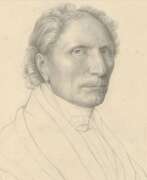

Gerdt Hardorff the Elder was a distinguished German artist and educator, celebrated for his contributions to the Hamburg art scene from the late 18th to the mid-19th century. His career was marked by a devotion to painting, teaching, and collecting art, which left a lasting impact on the cultural landscape of his time.
Hardorff's early artistic training was at the Dresden Academy of Fine Arts, where he honed his skills in portrait painting and studies from nature. Despite opportunities to study abroad, he chose to remain in Hamburg, where he rapidly established himself as a sought-after artist for portraits and religious commissions.
Throughout his life, Hardorff was deeply involved in art education. In 1802, he began teaching at the Johanneum and later at the Patriotische Gesellschaft's school for the poor. His teaching influenced a generation of Hamburg artists, including notable names such as Philipp Otto Runge and Hermann Kauffmann.
Hardorff's work can be seen in several prestigious collections, including the Hamburger Kunsthalle and the Museum für Hamburgische Geschichte. His art captures the essence of the period with a focus on detailed realism and emotional depth.
For those interested in exploring the works and legacy of Gerdt Hardorff I, or seeking to purchase and collect pieces associated with this key historical figure, staying informed about upcoming sales and auctions is essential. Sign up for updates and don't miss an opportunity to own a part of Hamburg's rich artistic history.


Johann Gottlob Henschke, a distinguished German landscape artist and copper engraver, was born on September 8, 1771, in Dresden. His life and career were dedicated to creating sepiatinted views of the Dresden and Meissen regions, capturing the essence of German landscapes in his unique style.
Renowned for his precise and evocative landscape drawings and engravings, Henschke's works reflect a deep connection with his homeland's natural beauty. His mastery in depicting landscapes with a keen eye for detail and texture made his work stand out in the artistic community of his time. His contributions were significant in the field of landscape painting in Saxony during the late 18th century.
Henschke's legacy is preserved in various prestigious collections, including the Staatlichen Kunstsammlungen Dresden. His works are a testament to his skill and dedication, capturing the serene beauty of German landscapes that continue to fascinate art collectors, auctioneers, and experts in art and antiques.
For those interested in exploring the tranquil beauty of German landscapes through Henschke's eyes, his works offer a journey back in time, to the picturesque sceneries of 18th-century Dresden. His art not only provides aesthetic pleasure but also serves as a historical document of the landscapes of that era.
To stay updated on new collections, sales, and auction events featuring Johann Gottlob Henschke's works, sign up for our newsletter. This service is exclusively for enthusiasts eager to delve deeper into the world of landscape art and engraving, providing timely updates on opportunities to acquire pieces from Henschke's esteemed collection.


Franz Kobell was a German painter of the late 18th and early 19th centuries. He is known as a painter, draughtsman, architectural landscape painter, landscape painter, and brother of the artist Ferdinand Kobell.
Franz Kobell was court painter to the Elector Maximilian III of Bavaria. In addition to a small number of oil paintings, he produced more than 20,000 drawings of architectural landscape subjects, possessing the ability to work quickly and easily with pen and watercolor. His works ended up in various public and private collections.


Johannes Hermanus Koekkoek was a Dutch painter and draughtsman. Following his education, he worked as an art teacher, but soon decided to become a free-lance artist. In 1826, he moved to Durgerdam, near Amsterdam, where he would live and work until 1833. He initially combined seascapes and cityscapes but, in his later years, focused entirely on ocean scenes. Much of his inspiration came from the painters of the Dutch Golden Age. His style was essentially Realistic, but alos showed elements of the newer Romantic aesthetic. Rather than merely paint ships, he also learned as much as he could about the different types.


Mathias Gabriel Lori the Younger was a Swiss landscape painter, draughtsman, watercolorist and master of etching.
He mastered the art of painting under the guidance of his father, the painter Gabriel Ludwig Lori the Elder (1763 - 1840). In collaboration with his father, Matthias created the album "A Pictorial Journey from Geneva to Milan". He also co-authored a famous book on Swiss costume with 55 fine engravings.


Carlo Maratta, an Italian painter, was a prominent figure in the Roman school of art during the late 17th century. Known for his classical approach to Baroque painting, Carlo Maratta's works were deeply influenced by the styles of Raphael and Andrea Sacchi, blending classical grandeur with Baroque expressivity. His training under Sacchi and subsequent exposure to Pietro da Cortona's coloristic style significantly shaped his artistic development.
Carlo Maratta's career flourished with a series of public and official commissions, making him a leading painter in Rome, especially after Bernini's death in 1682. His portfolio includes religious paintings, altarpieces, portraits, and fresco cycles, with a notable emphasis on paintings of the Madonna and Child, which reinterpreted High Renaissance motifs. His work was highly esteemed across Europe, influencing not only Italian art but also attracting the attention of English visitors on the Grand Tour.
One of Carlo Maratta's significant contributions to the art world was his involvement in painting restoration towards the end of his career, including works by Raphael and Carracci. This phase underscored his deep connection to the classical art tradition. Maratta passed away in Rome in 1713, leaving behind a legacy that continued to be celebrated in art history.
For art enthusiasts, collectors, and experts, Carlo Maratta's work offers a window into the transition between the Baroque and the emerging Rococo style, embodying a blend of dynamism and classical restraint. His paintings, many of which remain in situ in Roman churches, offer a testament to his enduring influence on Baroque classicism.
To stay updated on exhibitions and insights into Carlo Maratta's works, art aficionados are encouraged to subscribe for updates, ensuring access to the latest research and opportunities to view his celebrated works in museums and galleries around the world.














